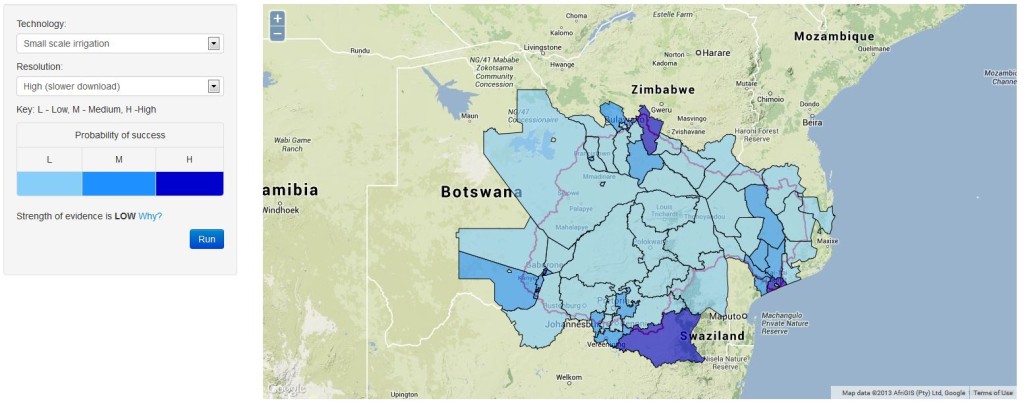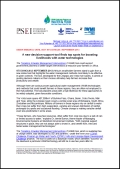New online tool helps smallholder water management
The majority of farmers in Africa rely on rainwater for to produce their crops but suffer from high evaporation, variable and uneven distribution of rainfall, prolonged dry spells and occasional flooding. Climate change is making variable rainfall even less predictable in some areas.
But now Africa’s smallholder farmers stand to gain from a new tool that highlights the water management methods most likely to be effective in given contexts. The tool, which was launched Tuesday 3 September at Stockholm World Water Week, was developed as part of a CGIAR Challenge Program on Water and Food (CPWF) project, led by the Stockholm Environment Institute (SEI). The tool was tested in the Volta Basin (Western Africa) and the Limpopo Basin (Southern Africa) which both have similar issues related to variable rainfall and access to water.
[blockquote textcolor=”#040434″ cite=”explains Jennie Barron, theme leader of Managing Environmental Ecosystems at Stockholm Environment Institute (SEI). “]Poor farmers in these regions often suffer from the loss of their crops but, with few incentives in place, they are reluctant to invest in water management technologies,[/blockquote]
Although there are already various proven agricultural water management (AWM) technologies and methods that could benefit farmers in these regions, they are often not employed to their full potential. The developers believe this tool however can help overcome hurdles that prevent wide-scale adoption of these approaches.
Successful interventions
The online decision support tool, called ‘Targeting AGwater Management Interventions (TAGMI)’, will help policy-makers, NGOs and other stakeholders to determine what parts of the Volta and Limpopo River basins have the highest chance of success for particular water management interventions.
Quoted in the Ghana business news, Dr Olufunke Cofie, IWMI researcher and Basin Leader for CPWF, said the research carried out before the development of the web tool was aimed at improving rainwater and small reservoir management to contribute to poverty reduction. She said it would also improve livelihood resilience while taking account of downstream and upstream water users including ecosystem services.
Developed using the DFID Sustainable Livelihood Framework, “success” is conditional on adequate levels of human, social, financial, physical, and natural and water resources. Each of these resources comprises two or three key factors; for example, human capital is made up of labour availability, skills and health. These are further broken down; labour availability varies according to working age, population and gender ratio, for example. The tool is unique in that these factors incorporate the views of farmers, extension workers and other local experts, alongside the available scientific data. This is important, as how projects are implemented and the level of local participation can be more important than resources in determining whether a project will succeed or fail.
Inexpensive and simple
The tool covers 85 per cent of the Volta basin (primarily in Northern Ghana and Burkina Faso), and all the countries of the Limpopo basin (although it is based largely on data from, and lessons learned in, Zimbabwe and South Africa). Three agricultural water management technologies are covered: conservation agriculture, small-scale irrigation and small reservoirs. Conservation agriculture is a way of managing agro-ecological systems based on rotating varying crops to maintain high soil quality; small-scale irrigation systems are those developed, owned and managed by individual farmers independent of existing public water schemes; and small reservoirs are earthen and cement dams up to 7.5 metres high.
All of these water management methods have the capacity to increase a farmer’s ability to survive dry periods and are relatively inexpensive and simple to implement. However, each requires a range of conditions if it is to provide the desired increases in productivity.
The tool was developed in collaboration with local researchers and experts, combining the knowledge of technical experts and local agriculture extension agents. Explore the tool.



